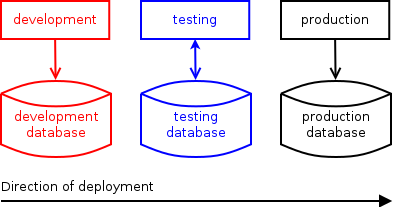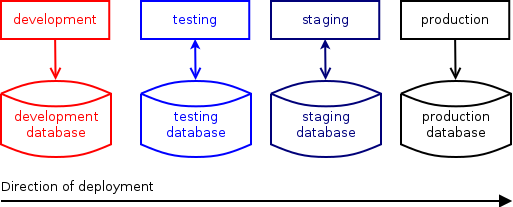Categories
Posts in this category
- Automating Deployments: A New Year and a Plan
- Automating Deployments: Why bother?
- Automating Deployments: Simplistic Deployment with Git and Bash
- Automating Deployments: Building Debian Packages
- Automating Deployments: Debian Packaging for an Example Project
- Automating Deployments: Distributing Debian Packages with Aptly
- Automating Deployments: Installing Packages
- Automating Deployments: 3+ Environments
- Architecture of a Deployment System
- Introducing Go Continuous Delivery
- Technology for automating deployments: the agony of choice
- Automating Deployments: New Website, Community
- Continuous Delivery for Libraries?
- Managing State in a Continuous Delivery Pipeline
- Automating Deployments: Building in the Pipeline
- Automating Deployments: Version Recycling Considered Harmful
- Automating Deployments: Stage 2: Uploading
- Automating Deployments: Installation in the Pipeline
- Automating Deployments: Pipeline Templates in GoCD
- Automatically Deploying Specific Versions
- Story Time: Rollbacks Saved the Day
- Automated Deployments: Unit Testing
- Automating Deployments: Smoke Testing and Rolling Upgrades
- Automating Deployments and Configuration Management
- Ansible: A Primer
- Continuous Delivery and Security
- Continuous Delivery on your Laptop
- Moritz on Continuous Discussions (#c9d9)
- Git Flow vs. Continuous Delivery
Tue, 19 Jan 2016
Automating Deployments: 3+ Environments
Permanent link
Software is written to run in a production environment. This is where the goal of the business is achieved: making money for the business, or reaching and educating people, or whatever the reason for writing the software is. For websites, this is the typically the Internet-facing public servers.
But the production environment is not where you want to develop software. Developing is an iterative process, and comes with its own share of mistakes and corrections. You don't want your customers to see all those mistakes as you make them, so you develop in a different environment, maybe on your PC or laptop instead of a server, with a different database (though hopefully using the same database software as in the production environment), possibly using a different authentication mechanism, and far less data than the production environment has.
You'll likely want to prevent certain interactions in the development environment that are desirable in production: Sending notifications (email, SMS, voice, you name it), charging credit cards, provisioning virtual machines, opening rack doors in your data center and so on. How that is done very much depends on the interaction. You can configure a mail transfer agent to deliver all mails to a local file or mail box. Some APIs have dedicated testing modes or installations; in the worst case, you might have to write a mock implementation that answers similarly to the original API, but doesn't carry out the action that the original API does.
Deploying software straight to production if it has only been tested on the developer's machine is a rather bad practice. Often the environments are too different, and the developer unknowingly relied on a feature of his environment that isn't the same in the production environment. Thus it is quite common to have one or more environments in between where the software is deployed and tested, and only propagated to the next deployment environment when all the tests in the previous one were successful.

One of these stages is often called testing. This is where the software is shown to the stakeholders to gather feedback, and if manual QA steps are required, they are often carried out in this environment (unless there is a separate environment for that).
A reason to have another non-production environment is test service dependencies. If several different software components are deployed to the testing environment, and you decide to deploy one or two at a time to production, things might break in production. The component you deployed might have a dependency on a newer version of another component, and since the testing environment contained that newer version, nobody noticed. Or maybe a database upgrade in the testing environment failed, and had to be repaired manually; you don't want the same to happen in a production setting, so you decide to test in another environment first.

Thus many companies have another staging environment that mirrors the production environment as closely as possible. A planned production deployment is first carried out in the staging environment, and on success done in production too, or rolled back on error.
There are valid reasons to have more environments even. If automated performance testing is performed, it should be done in an separate environment where no manual usage is possible to avoid distorting results. Other tests such as automated acceptance or penetration testings are best done in their own environment.

In addition, dedicated environment for testing and evaluating explorative features are possible.
It should be noted that while these environment all serve valid purposes, they also come at a cost. Machines, either virtual or native, on which all those environments run must be available, and they consume resources. They must be set up initially and maintained. License costs must be considered (for example for proprietary databases). Also the time for deploying code increases as the number of environment increases. With more environments, automating deployments and maybe even management and configuration of the infrastructure becomes mandatory.
I'm writing a book on automating deployments. If this topic interests you, please sign up for the Automating Deployments newsletter. It will keep you informed about automating and continuous deployments. It also helps me to gauge interest in this project, and your feedback can shape the course it takes.